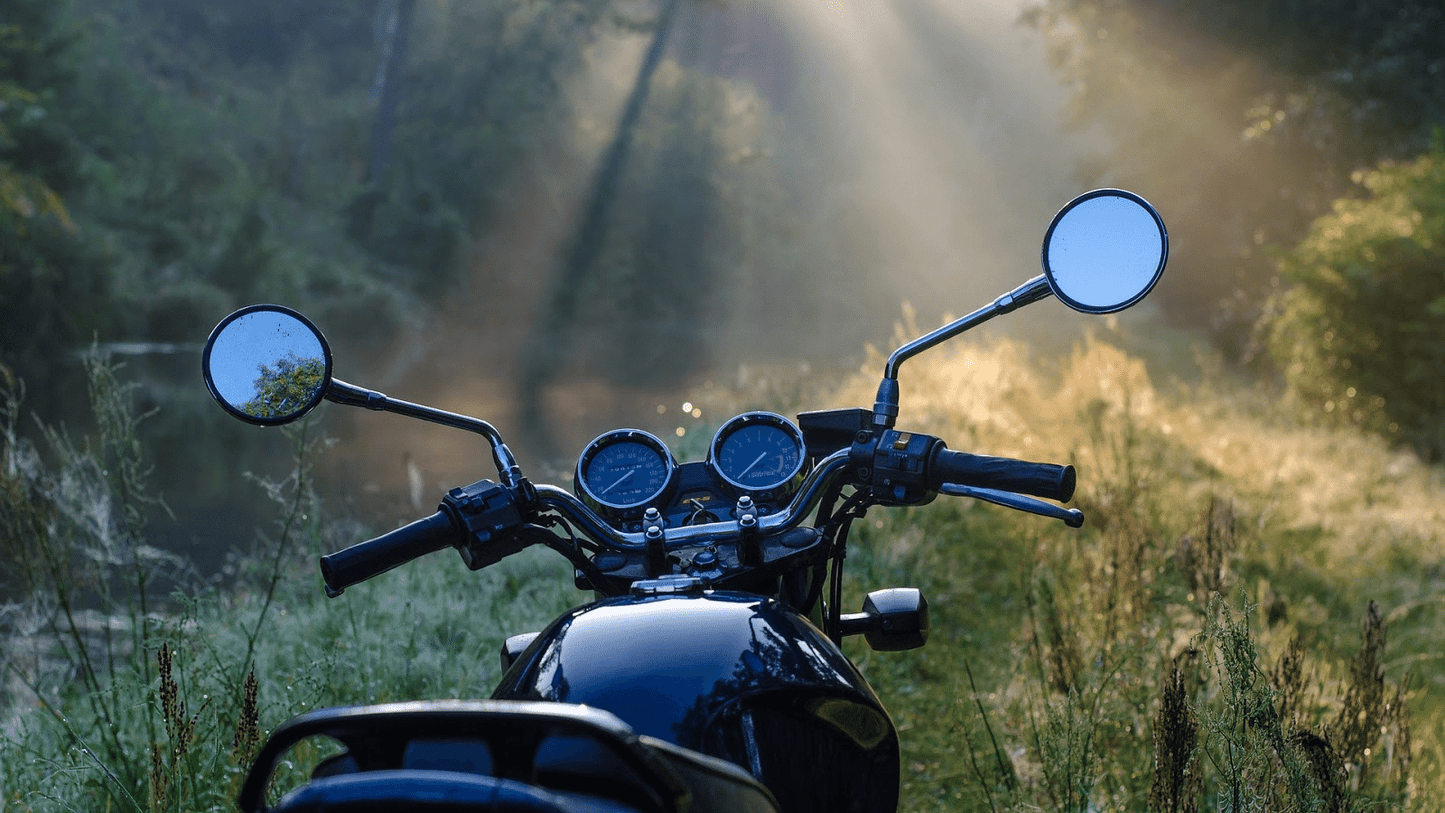
Drip...drip...drip...
That's the sound of icicles melting. Buds are appearing on trees, the temperatures are getting bearable...it's time to roll your ride out from the garage, thumb the starter, and go for a good long ride to enjoy the sweet-smelling spring air.
[sound of record scratching]
Not so fast, amigo! Besides temperatures rising, spring means the number of accidents, injuries and sadly, fatalities are rising as well. Obviously we can't divine the causes of all the crashes we see as the season starts, but we can guess spring-fever exuberance combined with seasonal and mechanical factors are probably represented to some degree. Here are some things you can do to bring you to a reasonable level of crash-avoision.*
Is your bike ready?
If you've read one of our prior articles about prepping your bike for its winter nap, you probably can just roll it out into the sunlight, thumb the starter and take off. But you shouldn't! Here's why.
Even if you replaced the engine oil with clean, fresh oil, double-check your oil level after you start the bike and let it run for a few minutes; if you forgot to do that when you changed the oil last year, it probably needs about a ½ quart of topping off.
How are the tires? Look for cracking on the sidewalls and check tread depth, and then check tire pressures. Tubeless tires can lose a few psi every month; tubes even more. Check your sidewall date (it's on the left side after the DOT, a four-number code molded into a long oval. The first two numbers are the week and the last two are the last two digits of the year, so '0117' means the first week of 2017. Oh, and if it's not on the left some person mounted your tire backwards!).
If a performance-oriented tire was mounted more than a few years ago, ride carefully until it's replaced. If it's more touring-oriented rubber, six years or less is fine. If you're riding some kind of barn find with perfect-looking tires that were manufactured more than 10 years ago, please get rid of them no matter how good they look! They're a crash waiting to happen.
You may have put your battery on a trickle charger or tender, but that doesn't mean your electrical system is all a-okay. Use a voltmeter to test the resting voltage of the battery (off the charger) and then test it with the bike running to check your charging system.
If you didn't have it on a trickle charger or tender, it's probably flat, but just charging it may not fix it. Lead-based batteries will tell the charger they're “charged” even if they only have 10 or 20 percent of their capacity...which means they might start your bike once or twice, but still leave you stranded down the road.
Are you ready?
Okay, so the bike's all ready, so hop aboard and blast into the sunset, right? Well...you may want to reconsider that. Spring is when motorcycles start getting on the road...and when riders start getting into ambulances in large numbers.
Obviously, the main reason we're more likely to get hurt in the spring is because there's more of us riding, but that's not the whole story. You haven't ridden for months, road conditions have changed after a season of snow and rain, and maybe you're on a new bike, or new tires. These and other factors, can combine with crash causes like speed, alcohol or mechanical failure and make you another data point for the NHTSA. Es no bueno.
So before you ride, take a few minutes to check your bike and your attitude. How do you feel? Scared? Nervous? Confident?
Maybe it's been more than just last summer since you've ridden—or you just want a chance to get some practice in a controlled area. In that case, consider taking a Basic RiderCourse from the MSF, or the CMSP's Motorcycle Training Course, or just practicing basic riding technique in a big, open parking lot.
Even if you don't think you'll need a refresher, you can still benefit from hitting “pause” for a bit. Start riding, but keep in mind that everybody—everybody—gets out of practice if they're away from an activity for a while, even just a week. Things happen faster on a motorcycle, drivers don't see you as soon as they would if you were in a car, and things like potholes and speed bumps affect you more. If you're on autopilot from a winter on four wheels, turn it down a notch or two until your subconscious mind fully realizes your riding again.
What are some other ways you get ready to ride after awhile? Share your pointers for getting back on two wheels in the comments below.
*If “avoision” isn't a word, it should be. So it is now.
